You already know about SPF, UVB, sunburn and its relationship with skin cancer… but what about UVA protection? Newer research has really highlighted the important of UVA protection, so this post will tell you all about what UVA is, what it does and how to protect your skin against it (i.e. lots of nerdy sunscreen talk).
The video version is here, scroll down for the article version…
What Is UVA?
As you no doubt know, the sun emits UV radiation, along with infrared radiation and visible light. I’ve talked about visible light and the damage it causes before.
Related post: Does Visible Light Cause Skin Damage? And How to Protect Against It
UV can be divided into 3 types according to their energy, which is inversely proportional to wavelength (in other words, short wavelength = more energy):
UVC (wavelengths 100-280 nm)
This is the most harmful type of UV, with the highest energy and lowest wavelength. But luckily, it’s also the least penetrating! UVC is almost completely blocked by the atmosphere and the ozone layer, so we don’t need to worry too much about it. It’s also known as germicidal UV since it can be used to kill microbes in sterilising procedures.
UVB (wavelength 280-315/320 nm)
UVB is the type of UV that you’ve probably heard about the most. About 90% of UVB from the sun is absorbed by the ozone layer, which means it’s a bigger issue for Australians and other people located near the South Pole, since we’re near the Antarctic ozone hole and we have excellent sunny weather which means we’re more likely to be hanging around outside.
UVB causes sunburns and skin cancer, but it’s mostly blocked by regular window glass. It’s also the type of UV light that’s involved in the production of vitamin D in the skin. UVB is strongest in summer, and in the middle of the day.
Related post: Sun Protection and Vitamin D Deficiency
UVA (wavelength 315/320-400 nm)
UVA penetrates the atmosphere better than UVB and UVC, and makes up ~95% of the UV radiation reaching the Earth. It also penetrates deeper into your skin than UVB.
UVA forms highly reactive free radicals in the skin, which randomly react with whatever’s around – for example, your skin’s proteins, DNA and lipids. This damage is known as oxidative stress, and it leads to visible wrinkles and old-looking skin, as well as deadly melanomas It’s the type of UV light that’s used in tanning beds and black lights.
Like UVB, UVA levels vary depending on the time of day and the season. However, it varies a lot less, so it’s important to think about UVA protection at off-peak times as well.
(The exact line between UVA and UVB depends on the regulations used, but 315 nm is the newer standard.)
UVA is further subdivided into UVA1, which has longer wavelengths closer to the visible range (above 340 nm) and UVA2, with shorter wavelengths closer to the UVB range (below 340 nm).
The reason UVA is less famous than UVB is that the dangers of UVA weren’t well researched until relatively recently. The effects of UVA are also less immediate and build up over time, which makes them arguably more dangerous.
UVA’s penetrative power is also scary – it can penetrate through glass, like the glass in your car’s side windows, which is why there are lots of asymmetric skin cancer and wrinkle patterns emerging. UVA damage is responsible for the asymmetric wrinkling on this veteran truck driver:
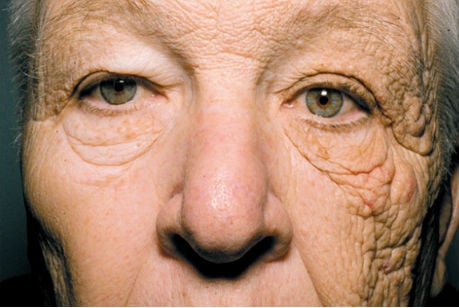 |
| Gordon JR & Brieva JC, Unilateral dermatoheliosis, N Engl J Med 2012, 366, e25. DOI: 10.1056/NEJMicm1104059. |
He drove a truck for 28 years with the windows closed, with the sun shining through the window and hitting his left side (our right when facing him). His right side received only indirect sunlight – the difference in skin aging is massive!
Even if you never go to the beach or lie in the sun, you’ll still be affected by UVA – it’s been estimated that 80% of UVA damage comes from everyday exposure, during activities like walking, driving and even sitting near windows. So how can we protect ourselves?
UV Protection in Sunscreens
SPF
Before we talk about UVA protection, let’s talk about SPF (Sun Protection Factor), the most well-known measure of a sunscreen’s protection.
Sunscreens are almost always labelled with an SPF value. It tells you the sunscreen’s ability to protect you from erythemal UV – the type of UV that causes redness and burning. The higher the SPF, the higher the protection against erythemal UV.
Erythemal UV is mostly UVB, but shorter wavelengths of UVA are also involved. It’s estimated that about 80-91% of erythemal UV is UVB, with the remaining 9-20% UVA. If a sunscreen only protects against UVB and offers no protection against UVA, the highest protection that can be achieved is only SPF 11!
SPF was introduced as a measurement of sunscreen protection during the 1970s, before all the UVA-is-dangerous research, when it was assumed that erythemal UV was the only type of UV to be concerned about.
The problem is that SPF doesn’t tell you much information about UVA protection, particularly the longer wavelengths of UVA that aren’t involved in burning. That’s where other regulated terms for UVA protection come in.
Related post: What Does SPF Mean? The Science of Sunscreen
Broad Spectrum
In most countries the term “broad spectrum” is regulated to show how far the UV protection of a sunscreen extends into the UVA region.
There are a couple of different ways of measuring broad spectrum: the critical wavelength method and the UVAPF-to-SPF ratio.
Critical wavelength >370 nm
For the critical wavelength test, the UV absorbance of a sunscreen from 290 to 400 nm is measured, and the area under the curve is calculated. To be “broad spectrum”, at least 10% of the area under the curve must be at a wavelength of 370 nm or longer. The critical wavelength is the longest wavelength at which the 10% mark is met.
UVAPF-to-SPF Ratio > 1:3
The second criteria is the UVAPF-to-SPF ratio. To be broad spectrum under this criteria, the UVA protection must be at least 1/3 of the labelled SPF value. This can be measured using special plastic (PMMA) plates. This means that when this ratio is used, a higher SPF label will give you better UVA protection.
While critical wavelength tells you how far the protection extends, it doesn’t tell you how evenly spread out the protection is. Critical wavelength is an easier criteria to pass. Only the critical wavelength criteria is required in the US, but in the EU and Australia you need to have both for “broad spectrum”. That means that some sunscreens that are classified as broad spectrum in the US won’t qualify in the EU and Australia. One study tested 20 sunscreens, and found that 19 would be broad spectrum in the US, but only 11 would be broad spectrum in the EU.
In some Asian and European countries, there are numerical ratings for UVA, although there’s no one standard yet. The most common are:
PPD
PPD stands for “persistent pigment darkening” and measures how protective a sunscreen is against a long-term tan caused by UVA – it’s essentially the equivalent of SPF for UVA radiation. It’s commonly used for European sunscreens.
PPD 10 blocks about 90% of UVA rays, and is generally considered to be suitable for everyday use. For some reason PPD values are usually hidden away on the sides of packaging.
PA
PA is a similar concept to PPD, but rates sunscreens on their UVA protection with plus signs (+). It’s more popular in Asian countries. PA+ is roughly equivalent to PPD 2-4, PA++ is PPD 4-8, PA+++ is PPD 8-16 and PA++++ is PPD 16 and above. (If you’re mathsy, the conversion is 2number of plus signs.) Many Asian sunscreens have PA ratings prominently listed.
UVA-Protective Sunscreen Ingredients
Most sunscreen ingredients don’t give great UVA protection, especially longer wavelength UVA1. (Note: “physical” inorganic sunscreens zinc oxide and titanium dioxide mostly absorb UV, so they don’t protect against all wavelengths, contrary to what you might read about them protecting against visible light.)
Related post: Chemical vs Physical Sunscreens: The Science (with video)
For a long time, the best ingredients for protecting against UVA1 were avobenzone and zinc oxide. These both had issues:
Avobenzone gives very high protection, but it’s photounstable, which means it breaks down quickly in UV light (although it can be stabilised)
Zinc oxide mostly gives even protection across UV wavelengths, but the protection it gives is quite low, which means you need a high concentration… but that means unpleasant sticky textures and white cast:
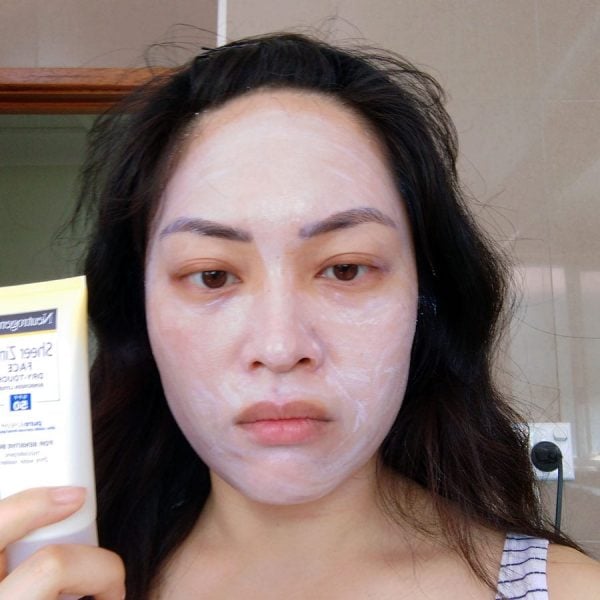
But luckily there are newer UVA-protective sunscreen ingredients on the market! They also tend to be photostable and don’t absorb into the skin much. Unfortunately they’re mostly not available in the US unless you import your sunscreen.
The filters are:
- Tinosorb S (bemotrizinol)
- Tinosorb M (bizoctrizole)
- Mexoryl XL (drometrizole trisiloxane)
- Uvinul A Plus (diethylamino hydroxybenzoyl hexyl benzoate)
- Mexoryl SX (ecamsule)
- Neo Heliopan AP (disodium phenyl dibenzimidazole tetrasulfonate)
Oxybenzone, octocrylene and titanium dioxide are less effective but still block some UVA wavelengths (mostly UVA2).
(For the super nerdy – this article shows the absorption spectra of a bunch of different sunscreen filters. The higher the line, the higher the protection at that wavelength – higher concentrations of that sunscreen filter will raise the curve and increase protection.)
More information on choosing a sunscreen, and setting up a skincare routine: The Lab Muffin Guide to Basic Skincare
Other Protection
As you can probably guess by now, sunscreens aren’t the best sun protection – many don’t have complete UVA protection, they need reapplying, and it’s really easy to miss a spot or apply too little. Luckily, there are other options:
- Wear sun protective clothing, hats and sunglasses. Hats are especially good for protecting your scalp – I know I never put sunscreen on my scalp!
- Seek shade and avoid sun exposure at peak times. Reflected UV will still cause damage, but less than direct UV.
- Add UVA tints to windows that you go near frequently, such as at home or in your car. Many windshields are already designed to block UVA.
References
Gordon JR & Brieva JC, Unilateral dermatoheliosis, N Engl J Med 2012, 366, e25. DOI: 10.1056/NEJMicm1104059.
Sayre RM et al., Commentary on ‘UVB-SPF’: the SPF labels of sunscreen products convey more than just UVB protection, Photodermatol Photoimmunol Photomed 2008, 24, 218-20. DOI: 10.1111/j.1600-0781.2008.00360.x.
Wang SQ et al., Comparison of ultraviolet A light protection standards in the United States and European Union through in vitro measurements of commercially available sunscreens, J Am Acad Dermatol 2017, 77, 42-47. DOI: 10.1016/j.jaad.2017.01.017.
Osterwalder U & Herzog B, The long way towards the ideal sunscreen – where we stand and what still needs to be done, Photochem Photobiol Sci 2010, 9, 470-81. DOI: 10.1039/b9pp00178f.
This post contains affiliate links – if you decide to click through and support Lab Muffin financially (at no extra cost to you), thank you! For more information, see Disclosure Policy.
[lastupdated]
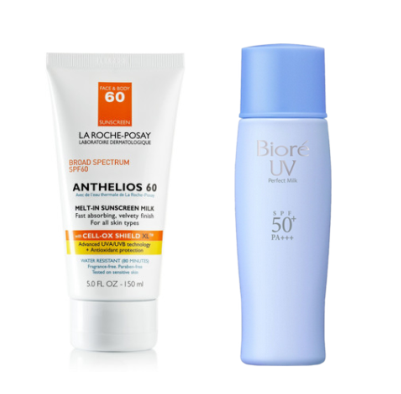




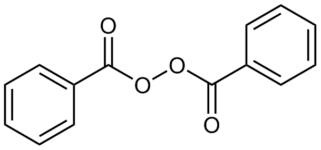
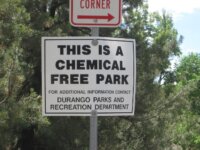
Thank you for this extremely informative post! I definitely learnt something 🙂
Tasha // shiwashiful.
Amazing post, and the pic really makes the point.
Reading this made me want to rush out and buy some La Roche-Posay Anthelios sunscreens pronto! Even though this brand is not available in my country 🙁
Have you heard of L’oreal’s drugstore sunscreen UV Perfect series with Meroxyl filters? L’oreal owns LRP so it looks like UV Perfect has the same UV blocker, but at a lower price. I, of course, want to try both brands ! 😉
I haven’t seen that around yet, but I will look out for it!
This was the most helpful post I have ever read! I’m trying to cram as much SPF, skin etc knowledge as I can for my finals and I’m so happy I found your blog. Thank you for making cosmetic science easier!
Dee xx
I never thought about window tint on my car actually being a skin protection. My car is pretty old so I never wanted to spend the money to tint my windows. However, I would rather spend a little now on some tint thinking of healthcare
I didn’t realize that most sunscreens only protected against UVB rays, not UVA rays. I’ll have to consider some of the other options of protecting against UVA rays that you mentioned, like tinting your home or car windows. Do tinted windows protect against UVB rays as well? Thanks.
UVB is actually blocked by glass already!
However, there are regulations around the term “broad spectrum” – in many parts of the world (including Australia), to label a sunscreen “broad spectrum”, the UVA protection must be at least 1/3 of the SPF value.
Hi, what do you mean by a 1/3 of the SPF value? as in SPF 30 sunscreen, the UVA protection is 10? but what is the measurement unit? PPD?
Thank you.
Yes, the UVAPF will be at least 10, but it’s usually measured in terms of critical wavelength rather than PPD.
Hi Michelle,
Thanks for replying.
woudl you mind also clarifying what that means “in critical wavelengths”?
Hi! Critical wavelength is a way of measuring UVA – it’s a little bit complex but basically it means 10% of the absorbed wavelengths must be >370 nm.
hi!
hmm, still a bit confused.so is that to say that an Aussie sunscreen of SPF50, the UVA protection would require 16.7% (50/3) of the wavelengths to be >370mm? what about wavelengths <370 but greater than the UVB spectrum?
Thank you!
I live in the US and it’s so confusing trying to figure out whether a sunscreen has adequate UVA protection! At least broad spectrum Australian sunscreens guarantee that UVA-PF is 1/3 the SPF – I don’t think US broad spectrum sunscreen even guarantees that. Even after reading tons of articles, I still don’t understand how the term “broad spectrum” is regulated in the US. It seems like my options are either (1) get a sunscreen from a country with better UVA measurements or (2) get a “broad spectrum” sunscreen and hope for the best. If you ever get the chance, I would love if you could make a more in-depth post on UVA measurement/labelling in different countries, because I’m quite confused about non-Asian and no -European countries and how they regulate UVA protection!
It’s quite confusing, it’s a good topic for a post though, thank you for the idea!
Hi Lab Muffin Michelle!
Thank you for a great article and explanation.
Please can you recommend specific sunscreens based on your assessment? I have been reading labels of sunscreens (some made in France) and can not find those new ingredients that you’ve listed.
It would be a tremendous help if you listed your recommended 5 sunscreens.
Thank you so much!
My favourites are here: https://labmuffin.com/video-my-top-6-favourite-sunscreens/
And there are more reviews here: https://labmuffin.com/my-sunscreen-mini-review-spreadsheet/
I only started looking at UVA protection a few years ago, and it makes a huge difference in the (re)appearance of my hyperpigmentation in the summer. The many different classifications are incredibly confusing though.
Anne|Linda, Libra, Loca
Hi Michelle! I recently ran into a post on Reddit that mentioned that Supergoop sunscreens aren’t photostable because they have octinoxate and avobenzone together. (I won’t post the link in case it will get flagged as spam — the post is ‘PSA: That Supergoop sunscreen you’re in love with probably isn’t protecting you from UVA rays’. Is this true? I wear face sunscreen from Japan with Tinosorb anyway, but I like Supergoop’s setting spray and their Everyday one for use on my hands and body. I don’t want to have a knee-jerk reaction from a post like that, and I’d love to hear your thoughts on why / why not this would be true or cause for concern. Thanks for continuing to be a trusted voice of reason! <3
Hey! Love your content it’s super informative!
What kind of UVA tints do you suggest for the windows? Also, I basically alternate between two bioderma sunscreens- the photoderm max with ppd 42 and the aquafluid tinted with ppd 26 both spf50. I have hyperpigmentation so would ppd26 be sufficient for me? I really like the fluid texture
Hi! I was just wondering, since you mentioned UVA doesn’t vary as much throughout the day, how to find out a sort of daily index for it?
I use the general UV index before applying sunscreen (live in Europe), and I know it somehow includes smth like a weighted average of both, but here in the fall-winter there is just low UV (1-2 in the winter) so I don’t wear sunscreen as it’s not recommended.
But I have no idea how much UVA is still coming through and if it’s smth to be preventative about. Not sure if you know, thanks!
“While critical wavelength tells you how far the protection extends, it doesn’t tell you how evenly spread out the protection is. Critical wavelength is an easier criteria to pass.” This is not true. CW test doesn’t just tell you there is non zero absorption at 370nm (how far it extends), but also that 10% absorption happens between 370-400nm (a measure of how spread out the protection is). In fact there are Japanese sunscreens with very high UVA PF that pass the UVAPF/SPF > 1/3 test but fail the CW test because their UVA protection is highly biased in the 315-370 range, which drives more PPD than the 370-400nm range.
“Note: “physical” inorganic sunscreens zinc oxide and titanium dioxide mostly absorb UV, so they don’t protect against all wavelengths.” 1. This logic does not make sense; 2. This statement is false. Zinc oxide literally provides the most even UV protection out of all filters, organic or inorganic, with a mostly flat extinction spectrum other than a moderate stepwise drop at 375nm or so. All organic filters have extinction peaks below that (other than the very new mexoryl 400 which is not relevant at the time of your post) and drop off more steeply after their peaks, even Tinasorb M and Tinosorb S aqua. So zinc-oxide-only sunscreen is going to always provide the best protection against 375-400 nm among all possible combinations of filters (excluding mexoryl 400) GIVEN THE SAME PROTECTION BETWEEN 280-375 nm. This is just math. It will also give better protection in the UVA II range compared to the popular UVB filters + avobenzone combo since avobenzone peaks in the UVA I range. Yes ZnO is less protective ounce by ounce, yes it is cosmetically inelegant, but you should still stay factual while making these points.
“CW test doesn’t just tell you there is non zero absorption at 370nm (how far it extends)” – that’s not what I meant by “how far it extends” vs “how evenly spread out it is”. If you look two paragraphs above, I’ve explained what critical wavelength means (I think you missed it since you pretty much just repeated what I said), there are also clarifying graphics in the video.
Re zinc oxide: Just because it’s the most broad spectrum of the available filters doesn’t mean it “protects [well] against all wavelengths” – no single filter protects against all wavelengths, your argument only makes sense if you assume one of them has to for some reason. I probably could’ve explained band gap theory here better so that the “absorbance = doesn’t protect against all wavelengths” would make sense for people who aren’t familiar with the chemistry. “Moderate stepwise drop” is an understatement, it’s a pretty massive drop of ~75%, not to mention that it doesn’t protect well at all against visible light (which again proceeds logically from band gap theory).